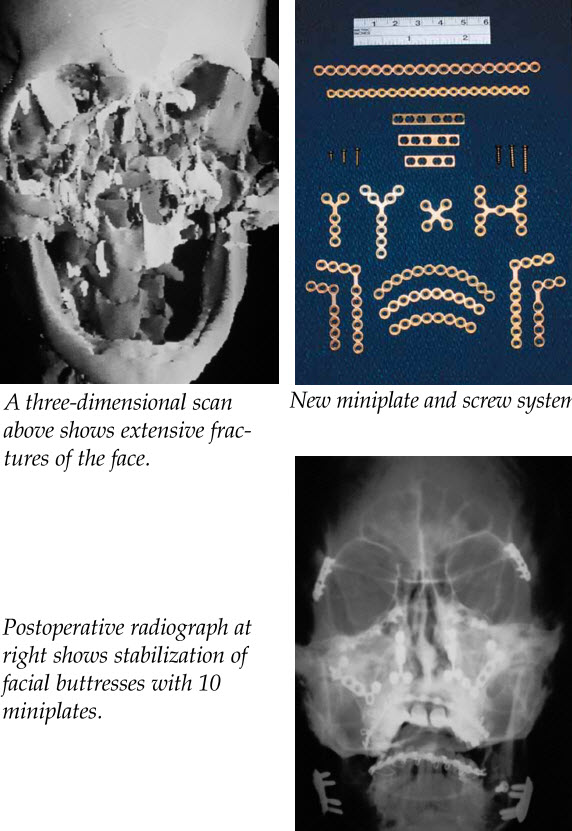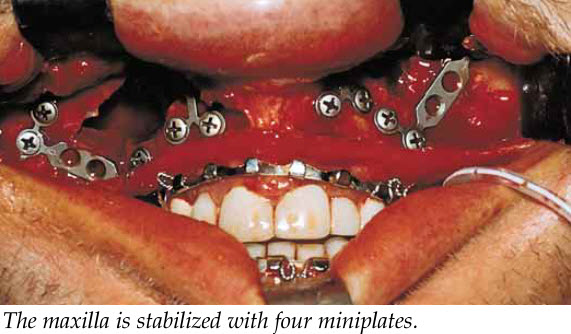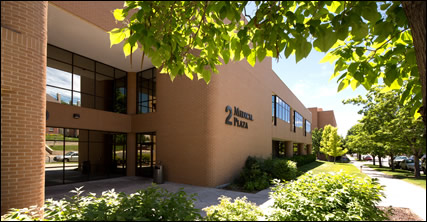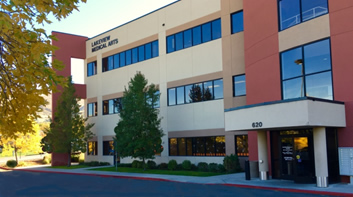Facial Trauma
Millions of people sustain trauma to the head and face resulting in complex fractures which, if not correctly diagnosed and treated, may cause permanent functional and cosmetic deformities. During the past decade, advances in radiographic procedures, the utilization of craniofacial surgical techniques, and the advent of rigid miniplate fixation have tremendously improved the functional and aesthetic results in facial fracture management.


The accurate diagnosis of facial fractures has been greatly improved by the addition of two- and three-dimensional CT scans which have replaced the plain radiographs for the diagnosis of many types of fractures. The three-dimensional reconstructions have enhanced preoperative bone analysis and planning by providing a life-like simulation of the fractures.
In acute trauma cases, the goal of reconstruction is a one-stage repair which has been made possible by the application of craniofacial techniques. Delayed treatment has been replaced by early or immediate surgical treatment and stabilization of small bone fragments augmented by bone grafts and miniplate fixation. These recent advances have allowed surgeons to approach and often reach the goal of restoring preinjury facial appearance and function while at the same time minimizing revisional surgery.
Without treatment in a timely manner, many individuals will develop future problems, the severity and consequences of which can be much greater than if the injury had been immediately repaired. However, modern craniofacial surgical techniques can now offer hope for patients with pre-existing post-traumatic facial deformities despite considerable delays between injury, diagnosis, and treatment. These innovative techniques establish a higher standard of care for the management of facial injuries.




















